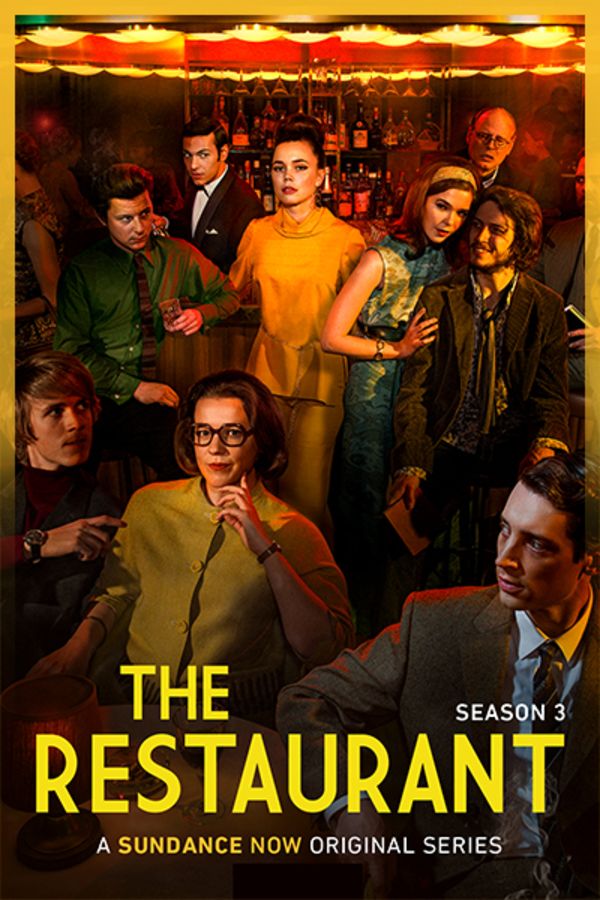“The Restaurant”–A Banquet of Plots

This Sundance Now series from Sweden begins in May 1945 in celebration of the end of World War II. Calle Svensson, a young working class aspiring chef, plants an impulsive kiss on a pretty young stranger, Nina Löwander. Her family owns a traditional, if old-fashioned, restaurant in Stockholm. Although officially neutral during the war, Sweden had both Nazi supporters and resisters. The first of three seasons in The Restaurant grapples with the war’s aftermath.
While peace is proclaimed all over Europe, a family battle begins to rage among Löwander family members: the matriarch, Helga, the widow of the restaurant founder; her eldest son, Gustaf; his brother Peter; and the daughter Nina. At times a fierce sibling rivalry for control of the restaurant becomes brutal and embittered with betrayal and deceit. Meanwhile, free-spirited Nina, the youngest, seeks independence. Unforeseen consequences happen. Subplots involve Margareta, a waitress struggling to support her three-year-old son, immigrant employees diabolically abused, and in-fighting among the chef’s staff.
No one in the drama experiences anything but momentary happiness, intensifying the action and moving the story forward. Rarely does an episode drag, except with somewhat lengthy music and dancing in the restaurant club that Nina manages. Primarily a richly plotted multigenerational family saga, The Restaurant deals with the world we are born into (including class) and how we react when that world changes. Much of the Lowander’s story focuses on the mother’s treatment of each sibling and how that impacts their decisions.
Sometimes called the Swedish “Downton Abbey, with its class hierarchy, The Restaurant goes beyond that reductionist label. The “Upstairs, Downstairs” restrictive behavior is soon nullified by the family saga within the Lowander family itself. Each main character has to struggle with financial considerations that impact their own families separate from their siblings.
Embracing time-leaps over two decades (1946-1962), The Restaurant, sustains the drama’s momentum from falling into boredom-creep that plagues so many period dramas. Characters evolve along with the radical social changes engulfing the conservative Swedish government. Historical footage of Stockholm and exquisite cinematography evokes the changes The Restaurant series touches on: issues including abortion, sexual identity and the political animus towards unionization.
A true gem to discover during this lockdown!

Lenore Gay
Not familiar with the film. So much going on, I’ll probably not watch. But it’s interesting!
Sona
Great review. Perfect. Glad we could finally return the favor of a good recommendation after all the wonderful ones you have given us.